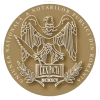By understanding these stages as a group leader – and educating different group members on the fundamental principles – you’ll find a way to https://www.globalcloudteam.com/ assist information your group to a harmonious, productive state. If conflicts arise, they’re easier to work via with the team’s newfound resolution methods. Additionally, there has been research exploring lean group development from the perspective of Tuckman’s mannequin. During the Norming stage, team members are not focused on individual recognition however are motivated by the success of the staff as an entire. This stage is important for the team’s development as it lays the foundation for the following stage, Performing, where the team operates at its peak effectivity. This stage could be short-lived or prolonged, relying on the team’s makeup and the complexity of the project.
Create A Group Tradition Of Honesty And Transparency

Facilitate staff discussions and remind team members to be respectful of others’ opinions and comments. Staff leaders might need to use visuals, such as swimlane diagrams and course of flows, with everyone’s roles and duties clearly outlined. Such visuals could be simply distributed to the group and may prevent arguments and confusion. Suppose again to your highschool days when you were assigned a gaggle project in certainly one of your courses. You got a task to complete and then challenged to complete that task with other folks (one of whom was definitely going to slack off and let the the rest of the group handle the entire project). So many points arose when the staff began working together, and it appeared more hassle to operate as a unit than as a person.
Moreover, the team must determine how individual group members’ skills can be used to perform the group’s aim. Now that we know how Tuckman arrived at his 5 stages of group growth, we can take a look at how groups move through these phases and what all of them represent individually. Forming, storming, norming, and performing are steps within the process of group development proposed by American psychologist Bruce Tuckman in 1965. If you’ve ever needed to work on a project with other individuals, chances are, you’ve skilled Tuckman’s levels of group growth firsthand. For group members, it is important to do not neglect that the ‘Adjourning’ stage, whereas sometimes unhappy, is a pure a part of the staff life cycle.

The exploration of the advanced social workings of teams is fascinating. Given the 5 levels of group development, the organization’s management has a task to play in making certain that teams develop effectively and obtain their required outcomes. As you’ll be able to probably imagine, each of those phases could take considerable time to progress. This time factor will relate to the significance of the task, the personality of the people involved, in addition to the individuals’ experience in coping with these sorts of teams.
This is the stage where staff members get more comfy working together and have a greater understanding of the team’s goals and direction. As a group leader, it’s your job to assist the group navigate through these insecurities and emotions and put together for the next group formation and management successor. No matter what, it’s important to have fun the team’s achievements and give them the opportunity to say goodbye to one another. In order to withstand what is the storming stage of group development the storming stage, it’s important for the group to remain targeted on its goals and desired outcomes.
Research has proven that this cohesion amongst group members has a major positive impact on their task efficiency. Reaching the performing stage requires groups to navigate the earlier phases of group improvement efficiently. The key is constructing belief and effective communication in the forming, storming, and norming stages. When group members learn to resolve conflicts, make clear roles, and align on targets, the group can reach a degree the place everyone works at their full potential.
The Adjourning Stage
But now that you know how to better navigate the storming phase, you’ve every little thing you need to effectively navigate the storm — and emerge on the other facet as a stronger group. Retrospective meetings are a great alternative for everyone to work collectively to make enhancements. It’s additionally important for you to contact base individually with workers in one-on-one meetings. They may share things they don’t feel comfortable sharing in a bunch setting.
- This stage is essential for social work teams to succeed and assist their communities.
- Be A Part Of us as we discover the enduring relevance of Tuckman’s phases and their impact on our collaborative experiences.
- The stages of group growth include forming, storming, norming, performing, and adjourning.
- It’s important to note that the Storming stage is a traditional and even a healthy a half of team growth.
Recognizing and appreciating the efforts and contributions of each member fosters a sense of accomplishment and camaraderie. It creates a optimistic ending to the group’s journey and sets the stage for future collaborations. The final stage of group development pertains to short-term groups and groups, where there might be an end to the group and the individuals cease being a group.
Particularly, Tuckman mentioned that there was an overrepresentation of remedy and training group settings within the literature. Thus, making generalizations that additionally utilized to the development of groups in natural and laboratory settings proved troublesome. Furthermore, as we have previously talked about, they must share these insights with exterior stakeholders. In the case of a professional environment, those may be both higher-ups within the company or exterior partners and shoppers. This will make staff members really feel appreciated, as shown within the exchange beneath.
Communication During The Adjourning Stage Of Team Development
This is the place the storm begins to settle, and the staff starts finding its rhythm. It’s just like the calm after a heated argument, a time when agreements are reached, and collaboration becomes the staff’s new favorite tune. The as soon as chaotic stage now transforms into a well-coordinated play, with everybody taking half in their elements harmoniously. Alright, let’s kick things off with the Forming stage.Strive to see it as the staff’s first date – everybody’s gathered, saying their hellos, and figuring out the lay of the land.
After navigating through the forming, storming, and norming levels, the team has now reached a degree of high effectivity and productiveness. A Lot like a well-rehearsed theatre performance, the group operates smoothly with a deep understanding of their roles and responsibilities Mobile app. They’re driven by a shared purpose, and each member is motivated and competent to carry out their duties autonomously.


